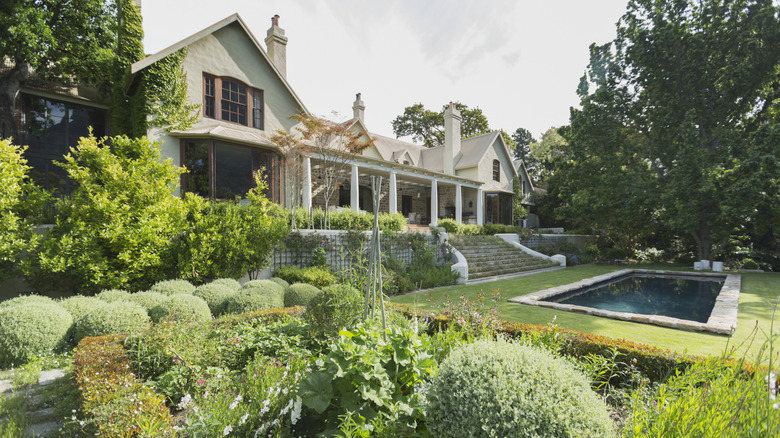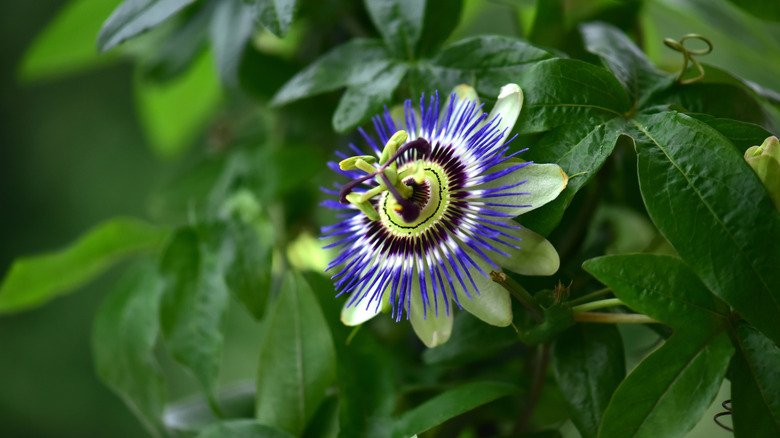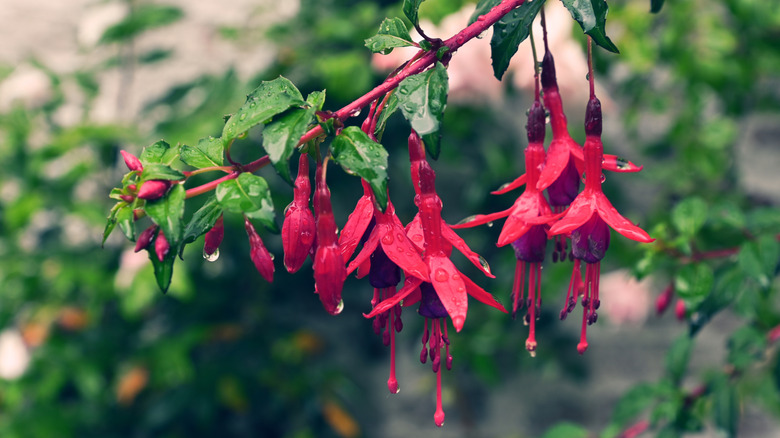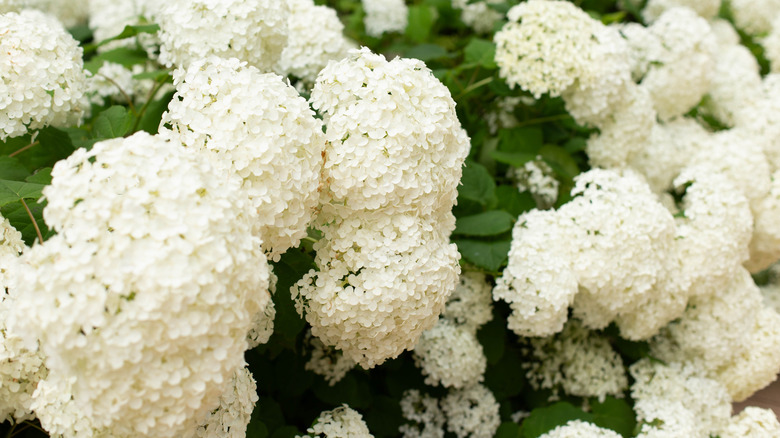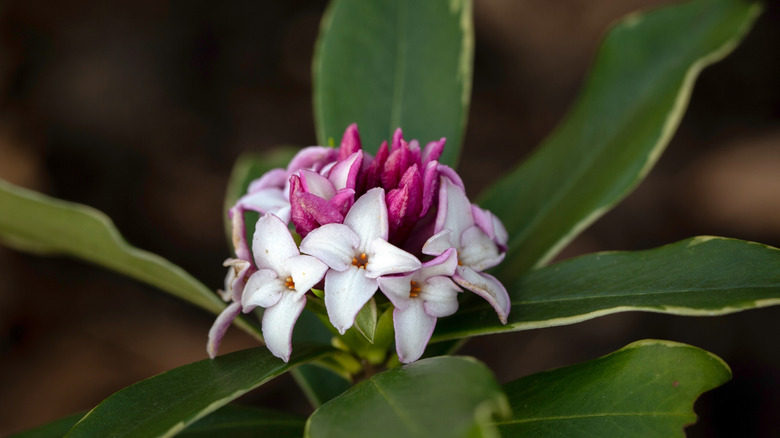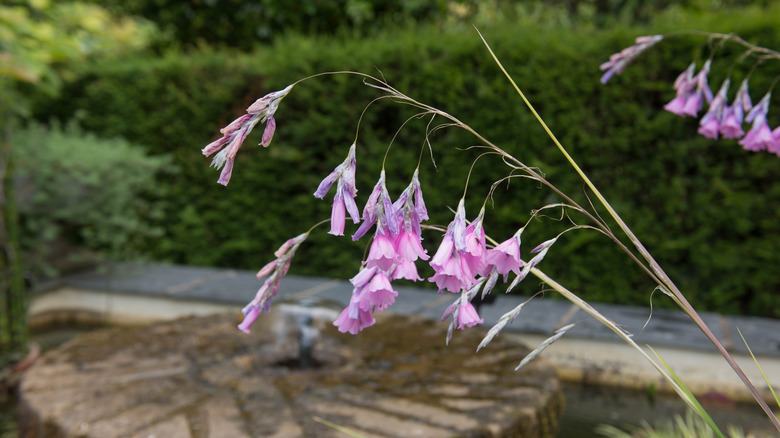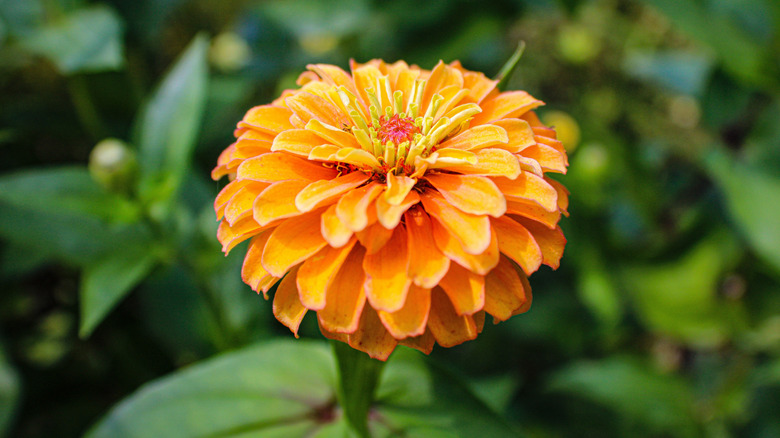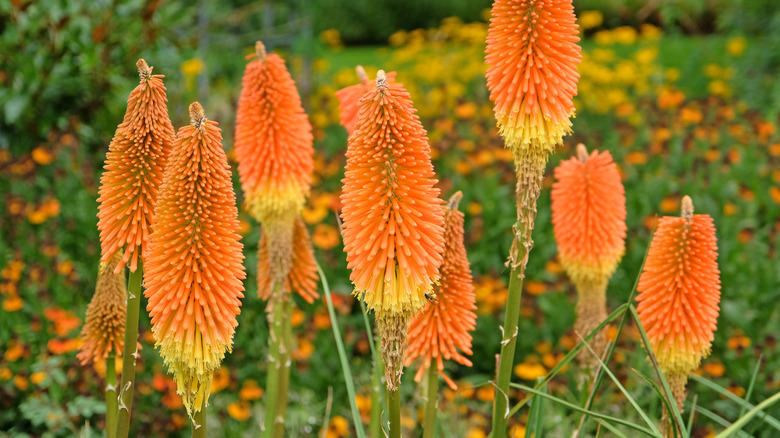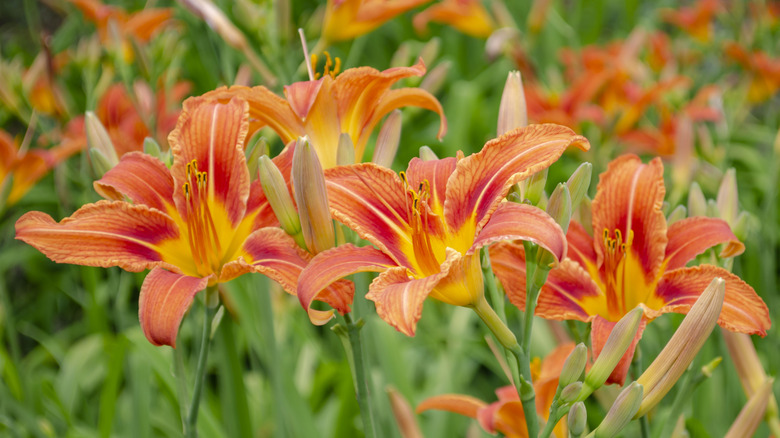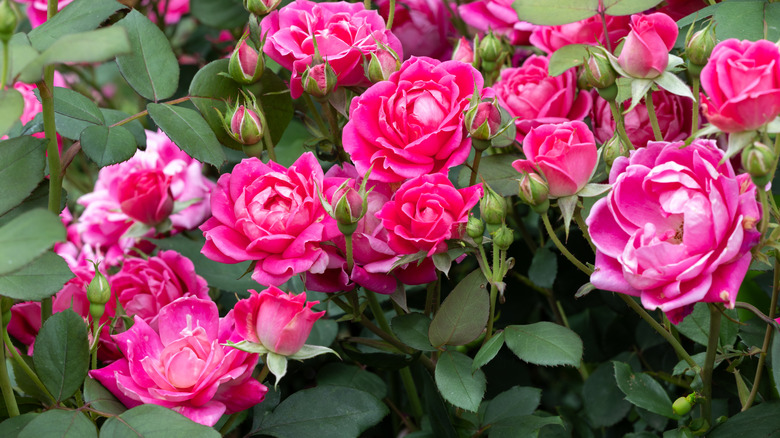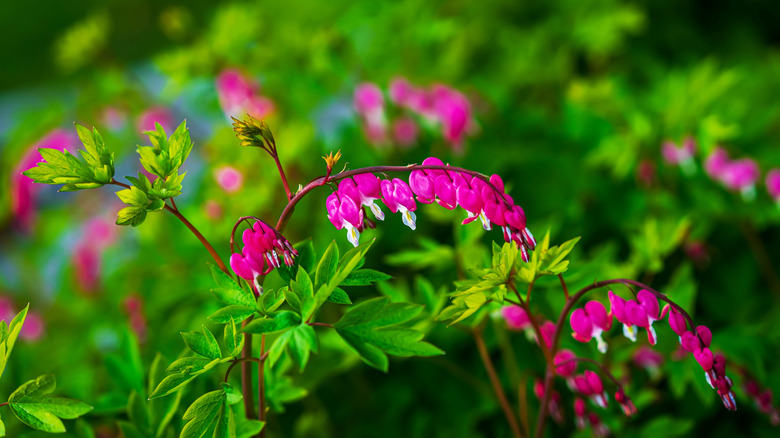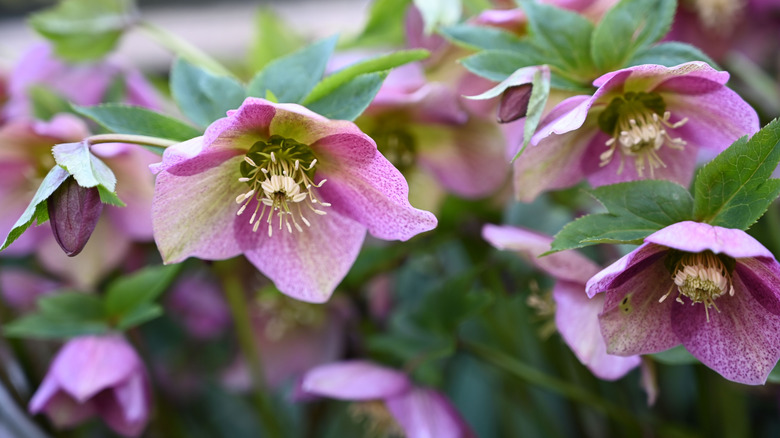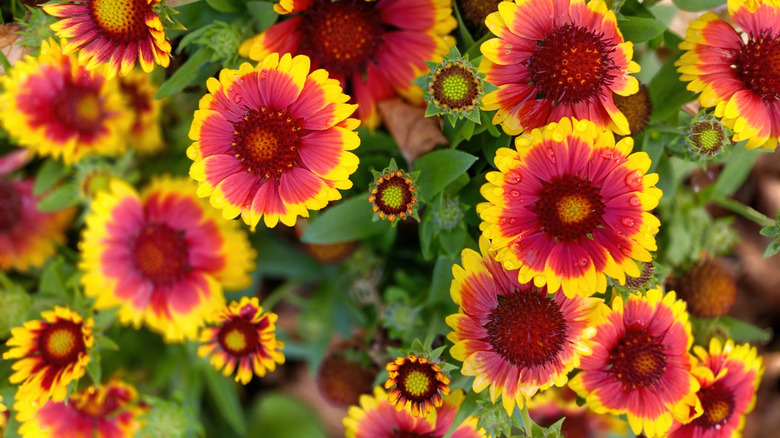12 Low-Maintenance Flowers That Give A High-End Garden Look Without The Work
If you want to create a luxurious, high-end feel in your backyard, it can be challenging to know which flowers to incorporate. It may be tempting to get exotic, uncommon plants for that expensive look, but they might not be that easy to look after. Thankfully, there are loads of low-maintenance flowers that exude a high-end vibe without the pressure of upkeep. From the stunning passionflower with intricate, intriguing blooms to classic daylilies, there are low-maintenance flowers that will fit into your garden perfectly.
However, don't rush when it comes to buying plants for your garden! Before choosing which low-maintenance flowers to add to your yard, reflect on the design of your garden. Creating a high-end look is less about what you plant and more about how you plant. Pay attention to the colors and textures of the plants you have and bring in flowers that create a cohesive design. Simple, formal planting with balance and symmetry can create a more luxurious look when compared to cottage wildflower gardens that are packed with different colors and shapes. Sometimes, less is more. With a little bit of planning and some beautiful flowers, you can make even simple spaces look luxurious and create the garden of your dreams. So, what flowers should you consider bringing into your high-end garden?
Passion flower
The passion flower (Passiflora incarnata) is an incredible flower that thrives when planted in the right conditions. Blooming from July to September, it produces elaborate, fringed flowers in hues of white, blue, and purple. Passion flowers grow easily in full sun or partial shade in well-drained soil and are suitable for growing in USDA Hardiness Zones 5 to 9. Make sure you are watering your passionflower as it establishes itself. Once it has settled in, it is pretty tough and drought tolerant. You may want to pinch back its vines to keep it bushy.
Hardy fuschia
Hardy fuchsias (Fuchsia magellanica) are fantastic low-maintenance flowers that produce lavish, drooping blooms in rich red shades. Perfect for borders, hanging baskets, and containers, hardy fuchsias flower from summer until the first frost. You can grow hardy fuchsias in zones 5 to 10, with these perennials preferring fertile, well-drained soil. When it comes to ongoing maintenance, you can leave your hardy fuchsia to grow into a large shrub or prune it to control its size. Pruning will promote new spring growth. In colder climates, it will die back during a hard freeze, but reappears again in the spring.
Annabelle hydrangea
With its stunning white blooms and structured shape, the Annabelle hydrangea (Hydrangea arborescens 'Annabelle') is a fantastic choice for a low-maintenance, high-end garden. Annabelle hydrangeas can be grown in zones 3 to 9 and prefer a spot in partial shade. If you are bringing this beautiful bloom into your garden, ensure that the soil is well-drained and moist. It can adapt to a range of soil conditions, but it does best in organically rich soil. A prune in late winter will help your Annabelle hydrangea grow in the spring.
Winter daphne
Winter daphne (Daphne odora) is an elegant perennial that produces small, pale flowers in shades of pink, white, and purple. A compact shrub, winter daphne tends to grow slowly and needs little maintenance once they have settled in. You can grow winter daphnes in zones 7 to 9, with these flowers thriving in moist, well-drained soil under either full sun or partial shade. The most important thing with this perennial is soil drainage. Ensure that the soil can dry out between waterings, and consider raised planting for your winter daphnes.
Angel's fishing rod
Angel's fishing rod (Dierama pulcherrimum) is a perennial plant with arching, grass-like leaves that are decorated with purple-pink bell-shaped flowers in the summer months. An enchanting flower, angel's fishing rod brings texture and color into a high-end garden. It is easy to grow and easy to maintain, and is suitable for hardiness zones 7 to 10. Plant your angel's fishing rod in full sun in well-drained soil. When it comes to maintenance, you will need to keep it watered during dry spells and tidy it up after flowering.
Dahlia-flowered zinnia
We all love the fluffy blooms of dahlias, but these flowers are notoriously high-maintenance. Thankfully, you can purchase dahlia-flowered zinnias (Zinnia elegans 'Dahlia-Flowered Mixed') that look just as good, but without all the drama! The term 'dahlia-flowered' refers to the multi-petaled, dome-shaped blooms of these flowers. Blooming in summer and fall, these annuals will brighten up your garden and look pretty fancy as they do so. Sow your dahlia-flowered zinnia seeds directly into your garden in a sunny spot with good soil drainage after the last frost.
Red hot poker
Red hot poker (Kniphofia uvaria) is an eye-catching perennial that brings a tropical vibe to a luxury garden. With long, dramatic leaves and 4-foot-tall flowers that bloom in an ombre of red and yellow, this red hot flower will stand out in your yard. Native to South Africa, you can grow red hot pokers in hardiness zones 5 to 9. They prefer well-drained soils in full sun and can be happy in a range of soil conditions. Once settled, red hot poker plants don't need that much care, except for deadheading.
Daylily
With many cultivars available, daylilies (Hemerocallis spp.) bloom in a variety of stunning shades. If you want to plant daylilies for a garden full of gorgeous color, place them in full sun or partial shade. Amend the soil with organic matter beforehand and ensure that it is well-draining. Once they are established, daylilies can survive dry spells, but watering them regularly during droughts can help them thrive. Although you don't need to give them much attention, to help them look their best, you can deadhead them in summer and remove any damaged foliage in the winter.
Knock Out roses
There is something super classy about the rose, but many cultivars are pretty fussy when it comes to feeding, pruning, and general maintenance. Thankfully, clever breeders have created roses that look stunning but need minimal care. Knock Out roses (Rosa 'Knock Out Group') consist of a range of cultivars that bloom in spring, summer, and fall. They are self-cleaning, resistant to diseases, tolerant to drought, and look incredible. Knock Out roses are suitable for hardiness zones 4 to 11 and only need a little pruning when you want to keep on top of their size.
Bleeding hearts
Bleeding heart (Lamprocapnos spectabilis) is a showy perennial that produces heart-shaped pink blooms in spring and early summer. These flowers decorate their long, arching stems, adding interest to a high-end garden. You can grow bleeding heart in hardiness zones 3 to 9. It prefers partial shade, but you can plant bleeding heart in full sunshine in cooler climates. It is tolerant of clay and sandy soils when given enough moisture, although it tends to do better in rich soils. Make sure the soil doesn't get too soggy during wetter seasons.
Lenten rose
With a maximum height and spread of 1 1/2 feet, the lenten rose (Helleborus orientalis) is a pretty small perennial plant. However, its beauty is not to be overlooked. This graceful bloom produces clusters of cup-shaped flowers in April, bringing color into your yard while your other plants are still waking up. Perfect for structured borders, lenten roses are suitable to grow in hardiness zones 4 to 9 and need a shady location with well-drained soil. They don't need much attention once they have established themselves, but cutting them back after blooming promotes fresh growth.
Indian blanket flower
The Indian blanket flower (Gaillardia pulchella) is a stunning annual that blooms in vibrant shades of red and yellow, often displaying a red color with yellow tips. If you want to add some boldness to your luxurious garden, the Indian blanket flower is a great choice. Flowering from late summer into fall, this plant does well in full sunshine. You can sow Indian blanket flower seeds directly into your garden once the threat of frost has passed. Once they get going, you don't need to do much, although deadheading will keep them looking tidy.
